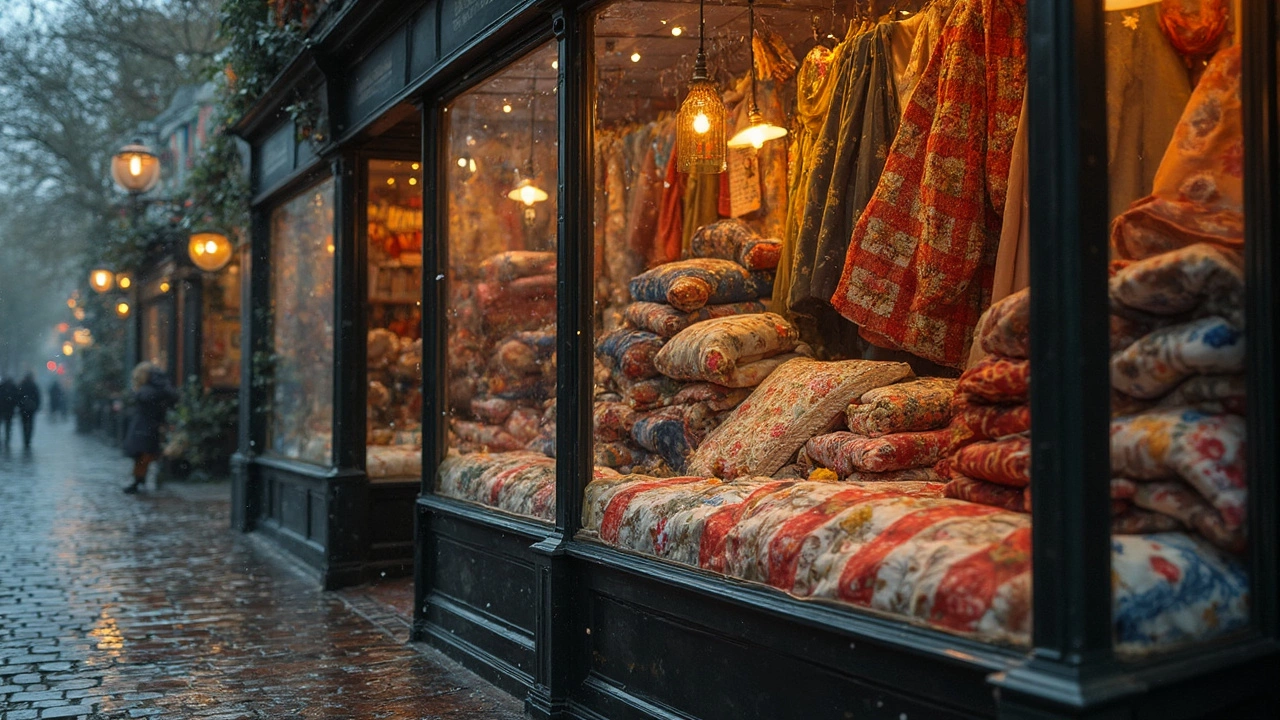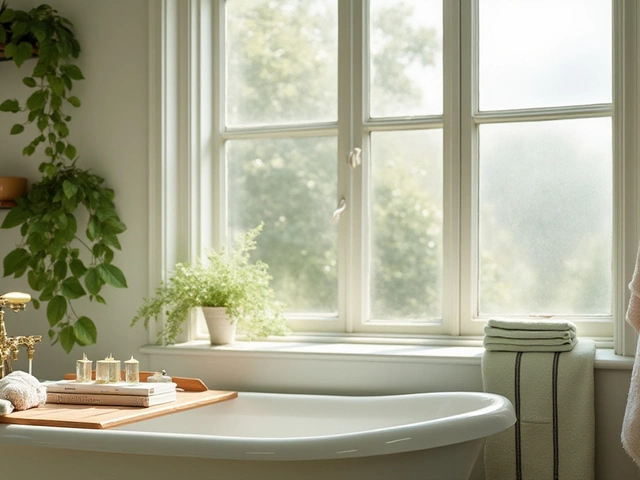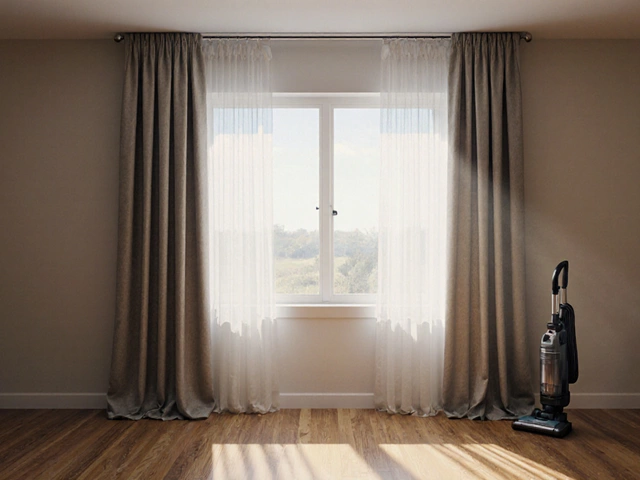Comforter vs. Blanket: What's Best for a Good Night's Sleep?

Here's the thing: what you use to cover yourself at night can really make or break your sleep. Comforters and blankets are two big players in the bedding world, and people often wonder which one is better. So, what's the deal?
Comforters are typically thick, fluffy, and filled with materials like down feathers or synthetic fibers. They provide a cozy and warm feel, perfect for those chillier months. Many comforters also come in a variety of styles and colors, adding a nice touch to your bedroom decor.
On the flip side, blankets are usually thinner and made from materials like cotton, wool, or fleece. Their simplicity can be a game-changer, especially in warmer climates or if you're just someone who gets hot at night.
Now, how do you choose? It often boils down to personal preference, climate, and even laundry habits. If you don't like dealing with dry cleaners, maybe lean towards blankets that you can easily wash at home. Need that extra warmth? A comforter might be calling your name.
Understanding Comforters
So, you've got your eye on a comforter, but what's the big deal? Well, comforters are popular for their warmth and style. Typically, they come filled with different materials like down feathers, synthetic fibers, or wool. Each fill type has its perks, with down being super soft and synthetic options often being allergy-friendly.
Types of Comforter Fills
A quick look at the fill options:
- Down Comforters: Filled with the fluffy underside of goose or duck feathers. They're light and cozy but might not be great if you're allergic.
- Synthetic Comforters: Usually made from polyester. They're non-allergenic, durable, and easy on the wallet.
Comforter Warmth Levels
Comforters come in different warmth levels, usually based on the fill power. A higher fill power means more fluffiness and insulation. You might also see labels indicating light, medium, or heavy warmth. Choosing the right level depends on how cold your nights get and personal preference.
Style and Maintenance
Comforters add a polished look to any bedroom. They come in all sorts of colors and patterns, letting you mix or match with your room decor. However, some comforters need professional cleaning, especially those with down fills, so keep that in mind before you buy. Always check the care label!
If you're on the fence, remember that comforters can feel like a warm hug on a cold night. Plus, they can last for years if properly cared for. Weigh these factors against your needs, and you'll find the perfect comforter for a great night's sleep!
Exploring Blankets
When it comes to blankets, simplicity meets versatility. They're not just for cozy nights; these essentials can play many roles depending on the material and thickness you choose.
Types and Materials
Blankets come in a variety of materials, each suiting different needs. Cotton blankets are breathable and great for those humid summer nights. Wool blankets, on the other hand, offer exceptional warmth, making them ideal for winter. Fleece blankets are soft, lightweight, and perfect for layering. If you're sensitive to allergens, hypoallergenic options are available that help reduce reactions.
Maintenance Ease
One of the biggest perks of blankets is their ease of cleaning. Most can be tossed in the washing machine, making them a practical choice for those seeking convenience. No need for special care instructions like you might encounter with a comforter.
Blankets in Use
Besides keeping you warm, blankets can be used as decorative throws or even as a picnic companion. Their adaptability is well-noted by sleep experts. According to Dr. Sarah Mitchell, a renowned sleep consultant,
"The right blanket can significantly improve your sleep quality by providing just the right amount of warmth and comfort."
Did You Know?
For those who are constantly chilly, layering a blanket alongside a lighter cover can offer flexibility throughout the year. This combo is especially popular among those living in areas with variable climates.

Key Differences
Alright, so let’s get down to it—the nitty-gritty of how comforters and blankets differ. Understanding these can seriously help make up your mind between the two.
Material and Construction
Comforters are often all about layers. They usually have an outer fabric shell and are filled with insulating materials such as down feathers, wool, or synthetic fibers. This gives them that fluffy, warm feel that many love.
Blankets, on the other hand, tend to be a single layer of woven fabric. Common materials include cotton, fleece, wool, and acrylic. They’re generally a bit more breathable because of their construction, which can be ideal if you’re prone to overheating at night.
Warmth
If you're looking to stay toasty, comforters generally provide more warmth and insulation due to their filling. Great for the winter months or cooler bedrooms. Blankets, being thinner and lightweight, might not offer the same warmth but are perfect for layering when temperatures fluctuate.
Versatility and Maintenance
When it comes to versatility, blankets usually take the cake. You can layer them with other bedding pieces, or even use them as a throw for your couch. They are also easier to maintain, with many being machine-washable right at home.
Comforters can be a bit more high-maintenance, often requiring special washing instructions or dry cleaning, especially if filled with delicate materials like down.
Style and Aesthetics
One thing comforters excel in is style. They typically come in sets with matching pillowcases or shams, making it easy to dress your bed in one cohesive look. Blankets are simpler, and while they come in various colors and patterns, they often don't dictate the style of your bed.
Cost
And then there’s the cost factor. Generally, comforters are pricier than blankets, especially if you’re choosing high-end brands with special fillings. Blankets can be a more budget-friendly option if you're looking to save a few bucks without sacrificing quality.
Choosing between a comforter and a blanket ultimately comes down to your personal needs and preferences. Think about your sleeping habits, the climate, and how much effort you want to put into maintaining your bedding. Hopefully, these differences help make your decision clearer.
Choosing What's Right for You
Picking between a comforter and a blanket isn't a one-size-fits-all answer. It's all about what suits your lifestyle, climate, and personal needs. Here are some factors to keep in mind:
Climate Considerations
If you're living in a colder area, a comforter might be your best bet for staying warm through the night. They're typically filled with insulation, whether it's down or synthetic, making them great for winter chills. In warmer climates, you might find a blanket more comfortable, as it's often lighter and made from breathable materials like cotton.
Personal Sleep Preferences
Some of us are hot sleepers and hate being too warm at night, no matter the season. In this case, a blanket might be the go-to choice. Conversely, if you love snuggling into a thick, fluffy layer, a comforter could be the comfort you crave.
Allergies and Sensitivities
If allergies are a concern, choose hypoallergenic materials for either the comforter or blanket. Many comforters are available with synthetic fills that resist dust mites, and blankets made from natural fibers like wool or cotton can be less irritating to the skin.
Maintenance and Care
Comforters can be bulky and might require dry cleaning or a large-capacity washing machine. Blankets, by contrast, are usually easier to wash and dry at home. Consider how much work you're willing to put into keeping your bedding fresh and clean.
Budget
You'll also need to think about budget. Comforters, especially those filled with quality down, can be pricier. But there are affordable options too. Compare those with blankets, which are generally on the cheaper side, allowing some flexibility if you're on a tight budget.
Trends and Aesthetic
Finally, think about how each option fits with your style. Comforters come in lots of colors and patterns that can complement your bedroom's look. Blankets, though simple, can add a classic touch or a pop of color when layered on the bed.
In the end, there's no wrong choice. It's about what makes you feel comfortable and helps you get the best sleep possible. Consider these factors, and you're sure to find the perfect fit for your bedding needs!





